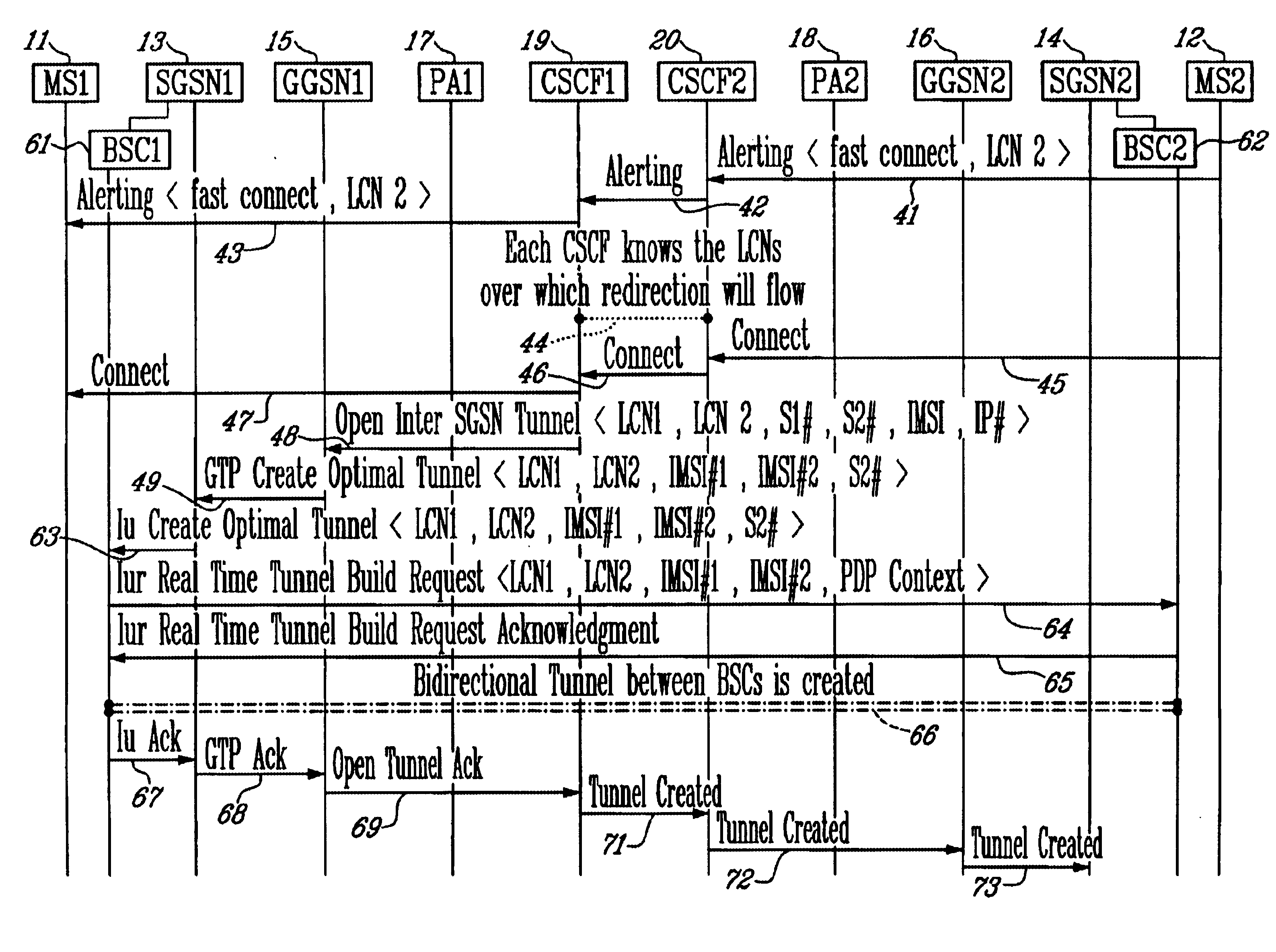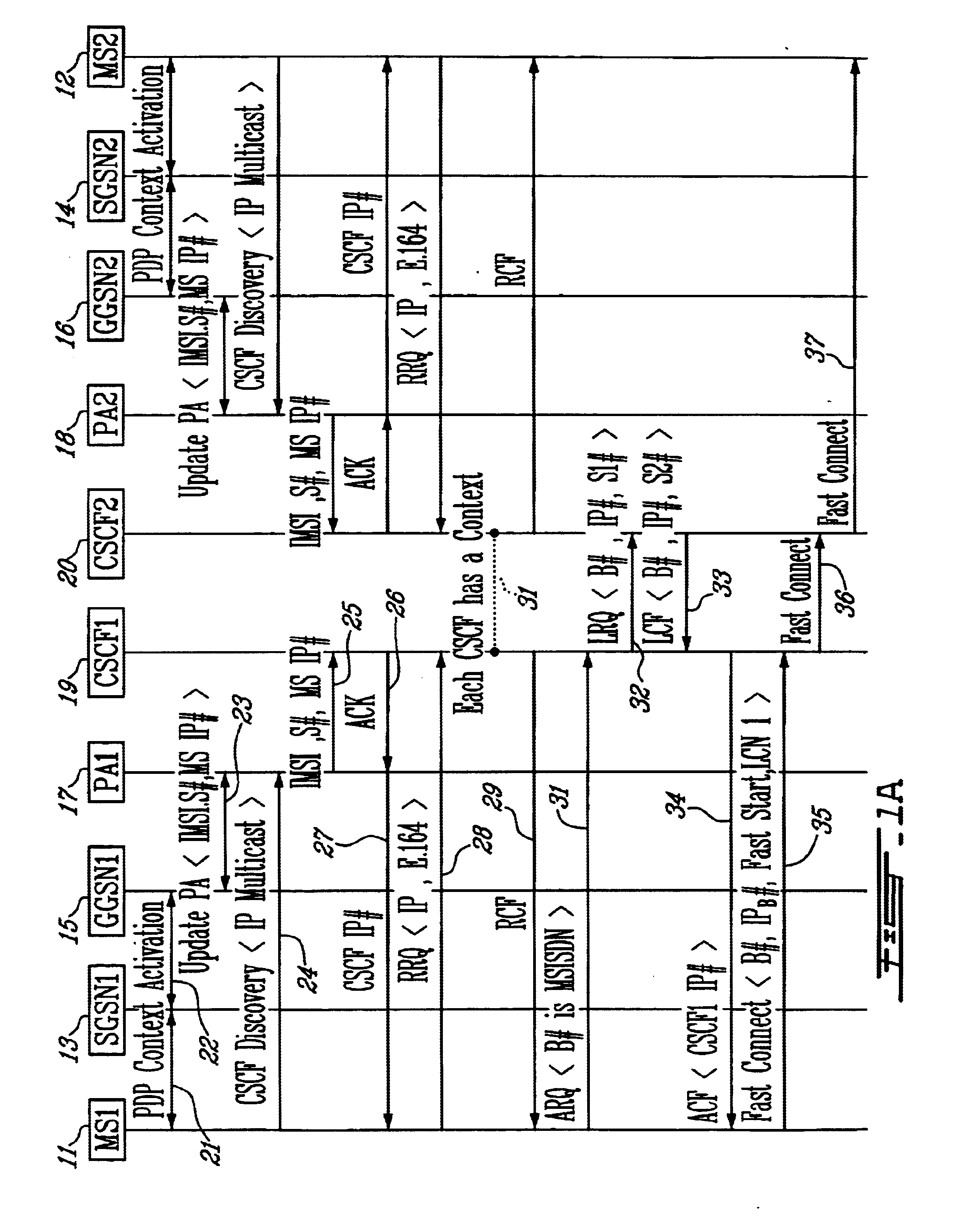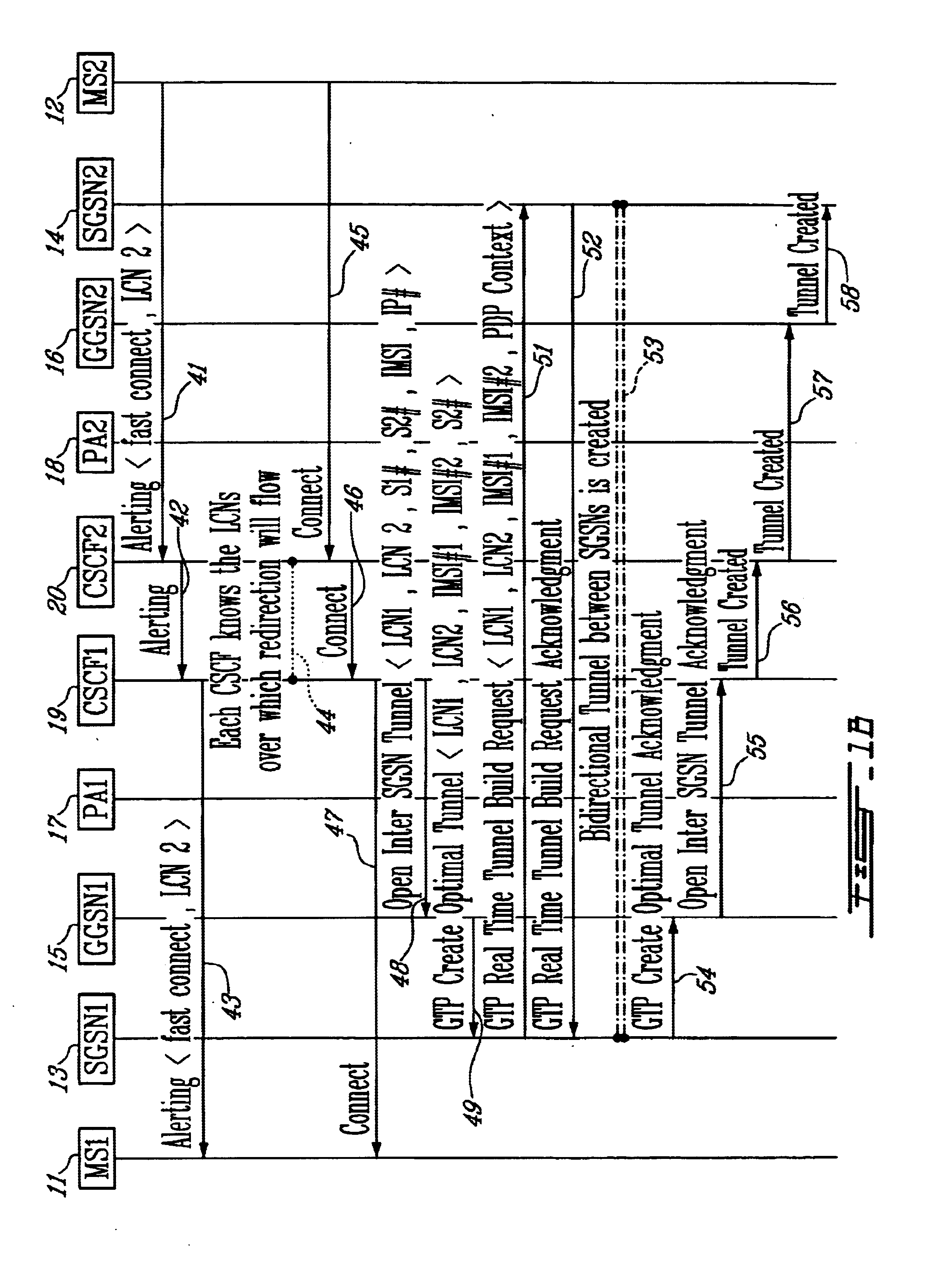Method of call control to minimize delays in launching multimedia or voice calls in a packet-switched radio telecommunications network
- Summary
- Abstract
- Description
- Claims
- Application Information
AI Technical Summary
Benefits of technology
Problems solved by technology
Method used
Image
Examples
first embodiment
FIGS. 1A-1B are a message flow diagram illustrating the flow of messages between the nodes of a packet-switched mobile access system when establishing an optimized tunnel in accordance with the method of the present invention. Illustrated in FIGS. 1A-1B are a first Mobile Station (MS1) 11 and a second Mobile Station (MS2) 12, a first SGSN (SGSN1) 13 serving MS1 and a second SGSN (SGSN2) 14 serving MS2, a first GGSN (GGSN1) 15 and a second GGSN (GGSN2) 16, a first PA (PA1) 17 and a second PA (PA2) 18, and a first CSCF (CSCF1) 19 and a second CSCF (CSCF2) 20. In the detailed discussion that follows, it is assumed that MS1 and MS2 register to two different CSCFs (CSCF1 and CSCF2) via two different proxy agent entities. Where appropriate, the steps are described for access by MS1, but are also performed for MS2 by the appropriate even-numbered nodes 14-20.
During PDP Context Activation at steps 21-22, the PDP context is created in the serving GGSN115, and includes the associated SGSN add...
second embodiment
FIG. 2 is a message flow diagram illustrating the flow of messages between the nodes of a packet-switched mobile access system when establishing an optimized tunnel in accordance with the method of the present invention. The procedures are the same as those shown in FIGS. 1A and 1B for steps 21-49. Following the Create Optimal Tunnel message 49, SGSN1 utilizes UMTS procedures to set up a tunnel directly between the base station controller serving MS1 (BSC1) 61 and the base station controller serving MS2 (BSC2) 62. Utilizing a procedure similar to a soft handoff, the BSCs use an Inter-BSC interface (I.sub.UR) and a BSC-to-SGSN interface (I.sub.U) to establish the inter-BSC tunnel.
At step 63, SGSN1 sends an I.sub.U Create Optimal Tunnel message to BSC1. BSC1 then sends an I.sub.UR Real Time Tunnel Build Request message 64 to BSC2. BSC2 returns an acknowledgment at 65, and the bidirectional tunnel between the BSCs is established at 66. This provides for further optimization and reducti...
PUM
 Login to View More
Login to View More Abstract
Description
Claims
Application Information
 Login to View More
Login to View More - R&D
- Intellectual Property
- Life Sciences
- Materials
- Tech Scout
- Unparalleled Data Quality
- Higher Quality Content
- 60% Fewer Hallucinations
Browse by: Latest US Patents, China's latest patents, Technical Efficacy Thesaurus, Application Domain, Technology Topic, Popular Technical Reports.
© 2025 PatSnap. All rights reserved.Legal|Privacy policy|Modern Slavery Act Transparency Statement|Sitemap|About US| Contact US: help@patsnap.com



